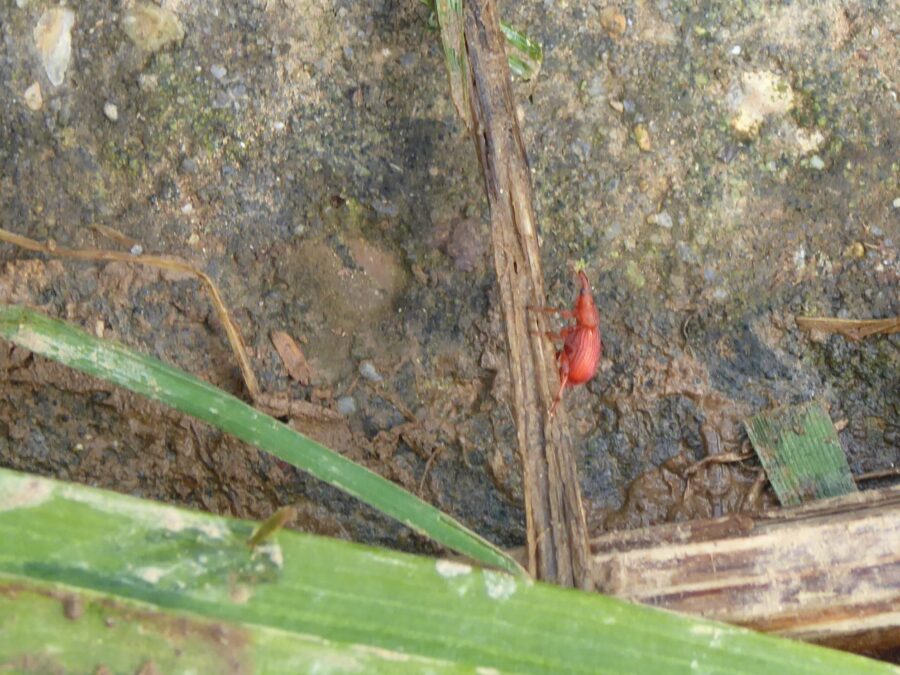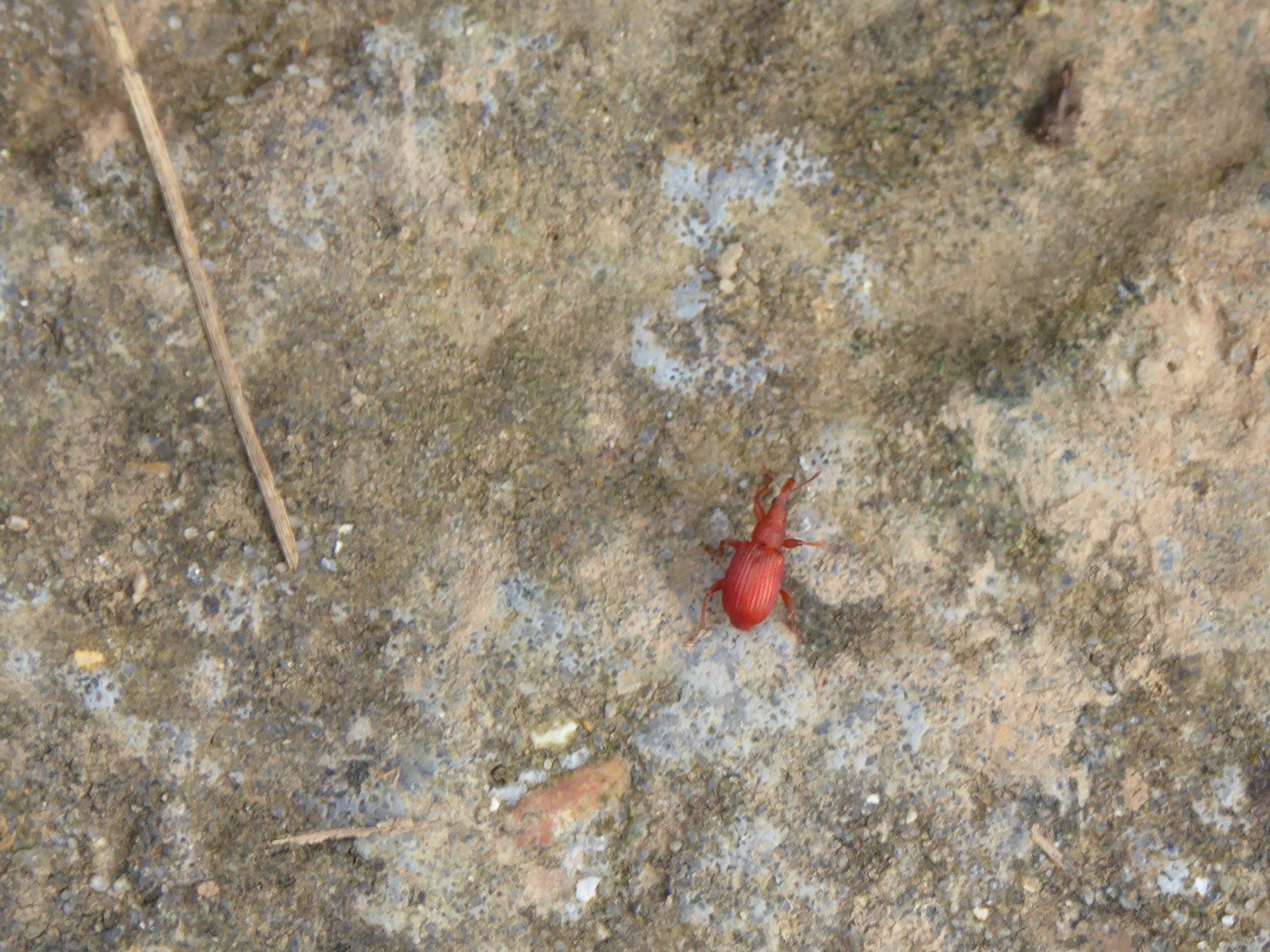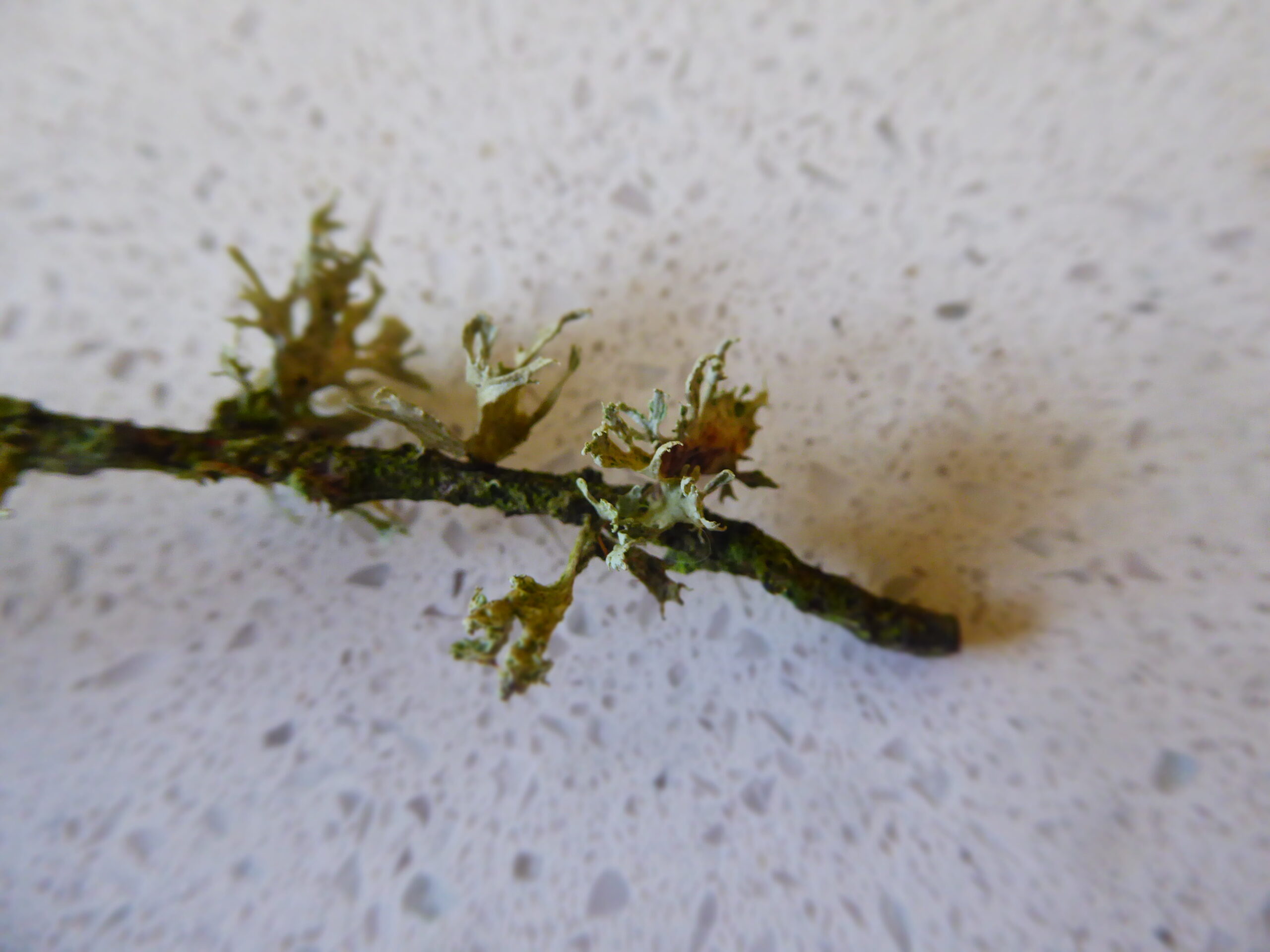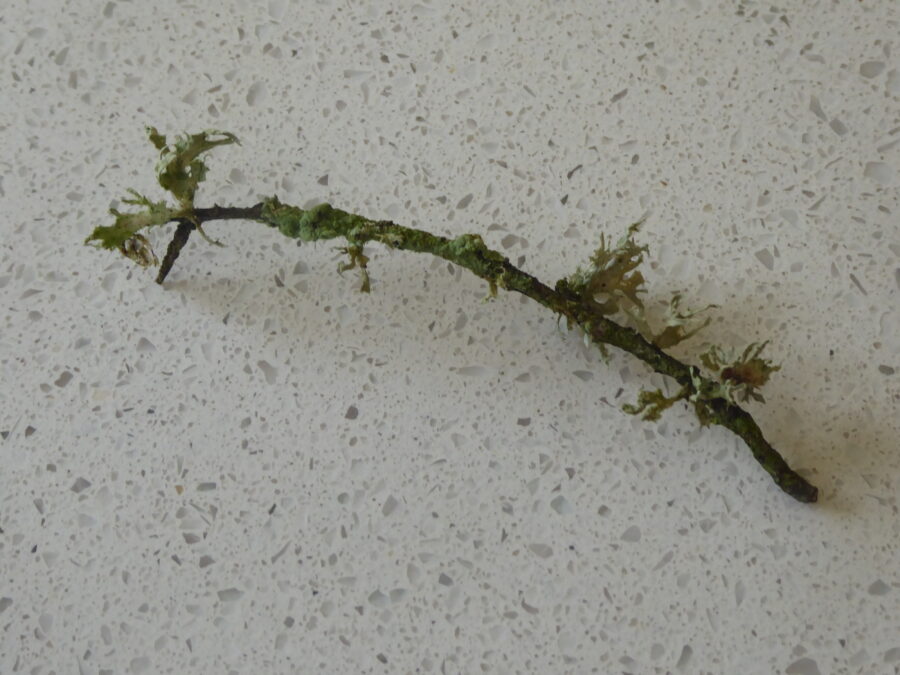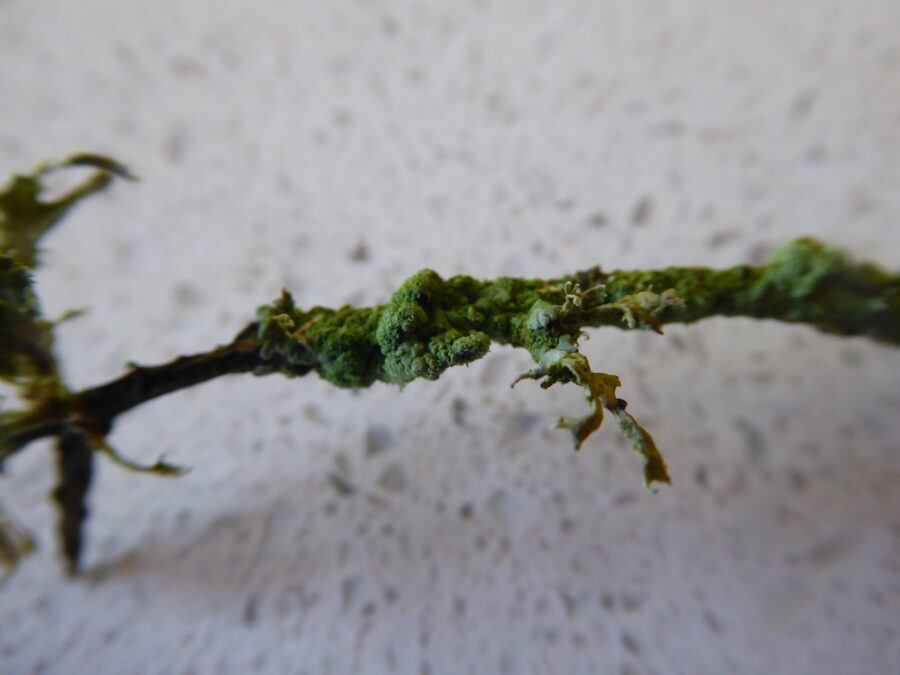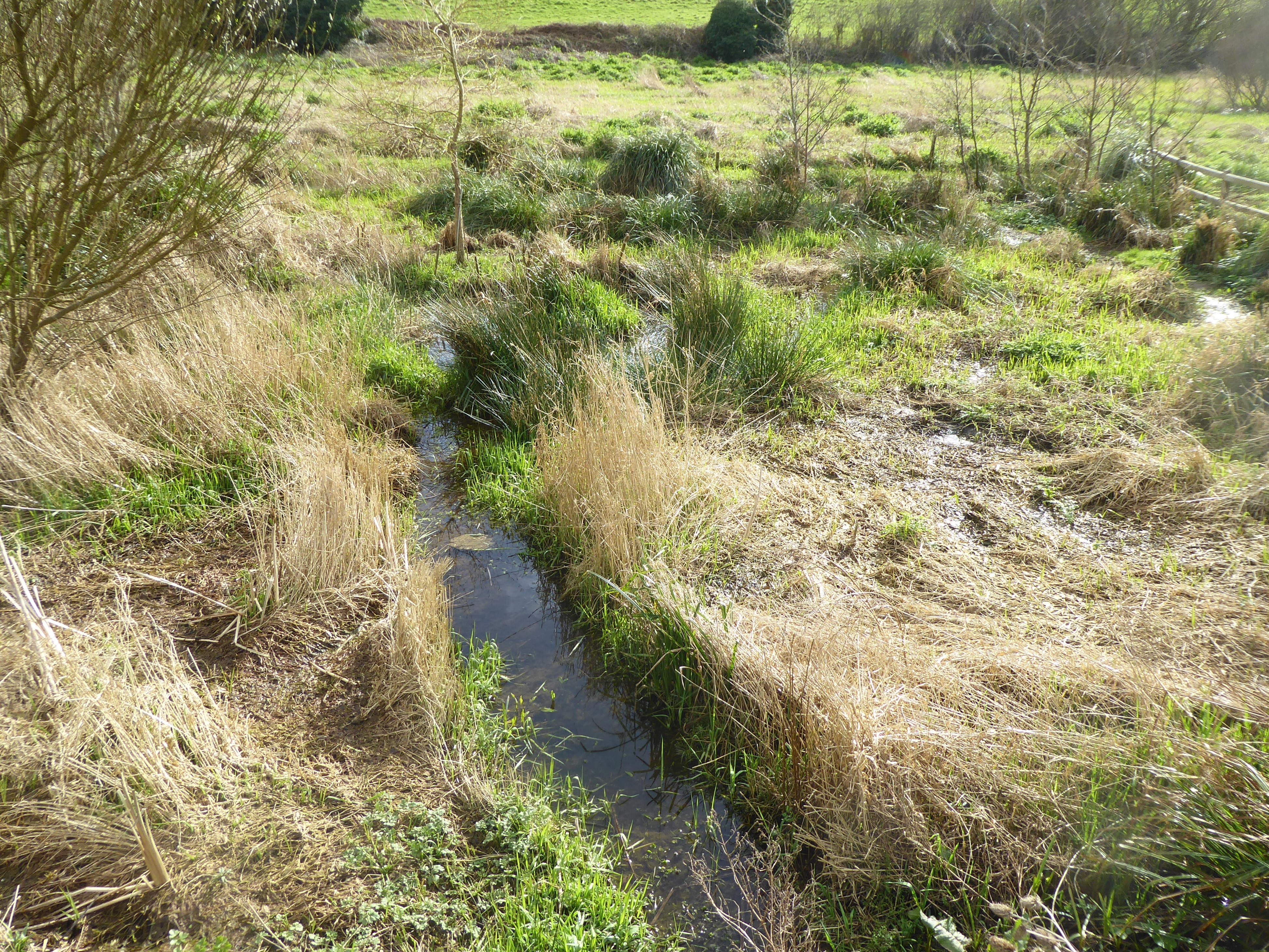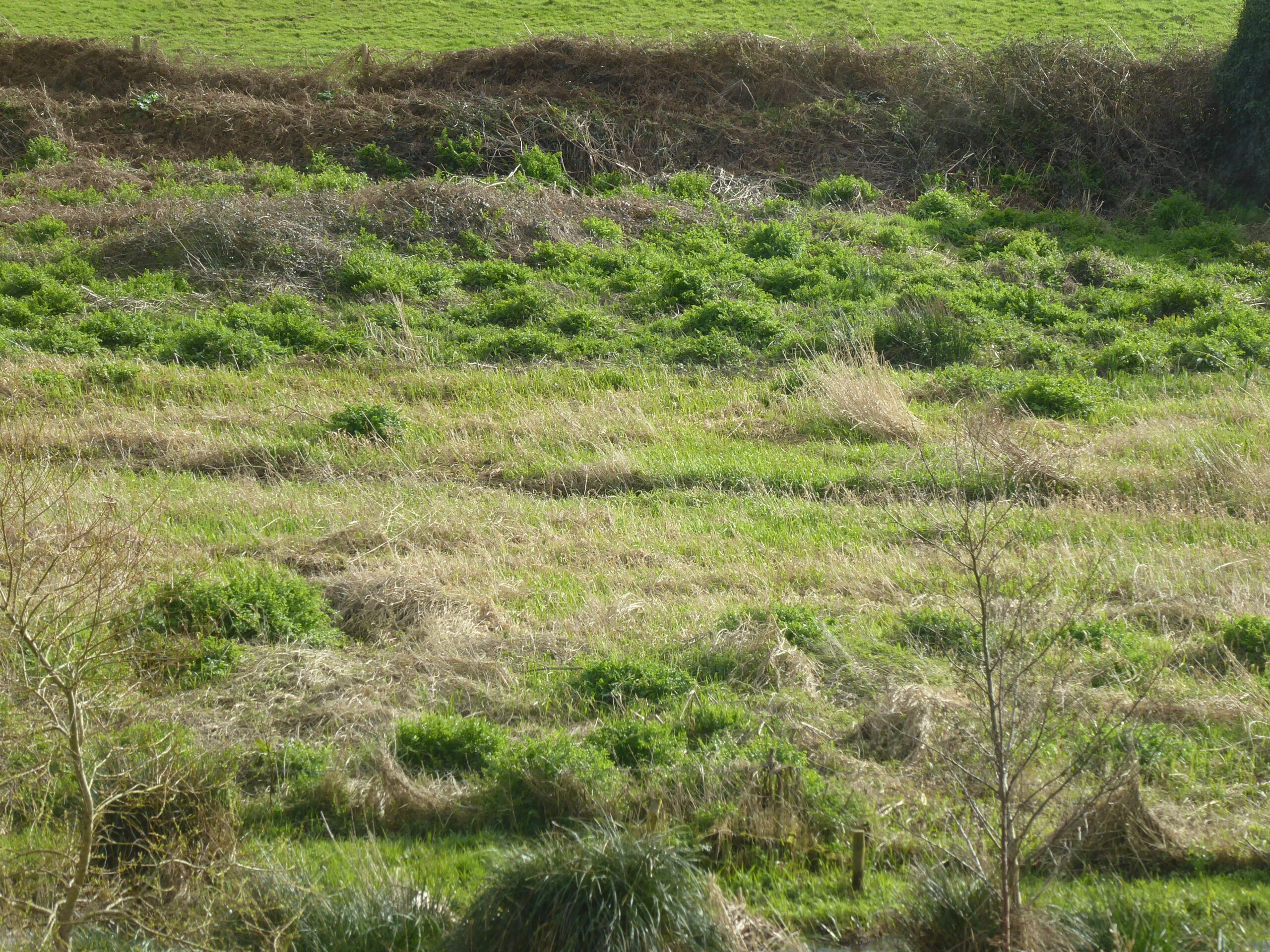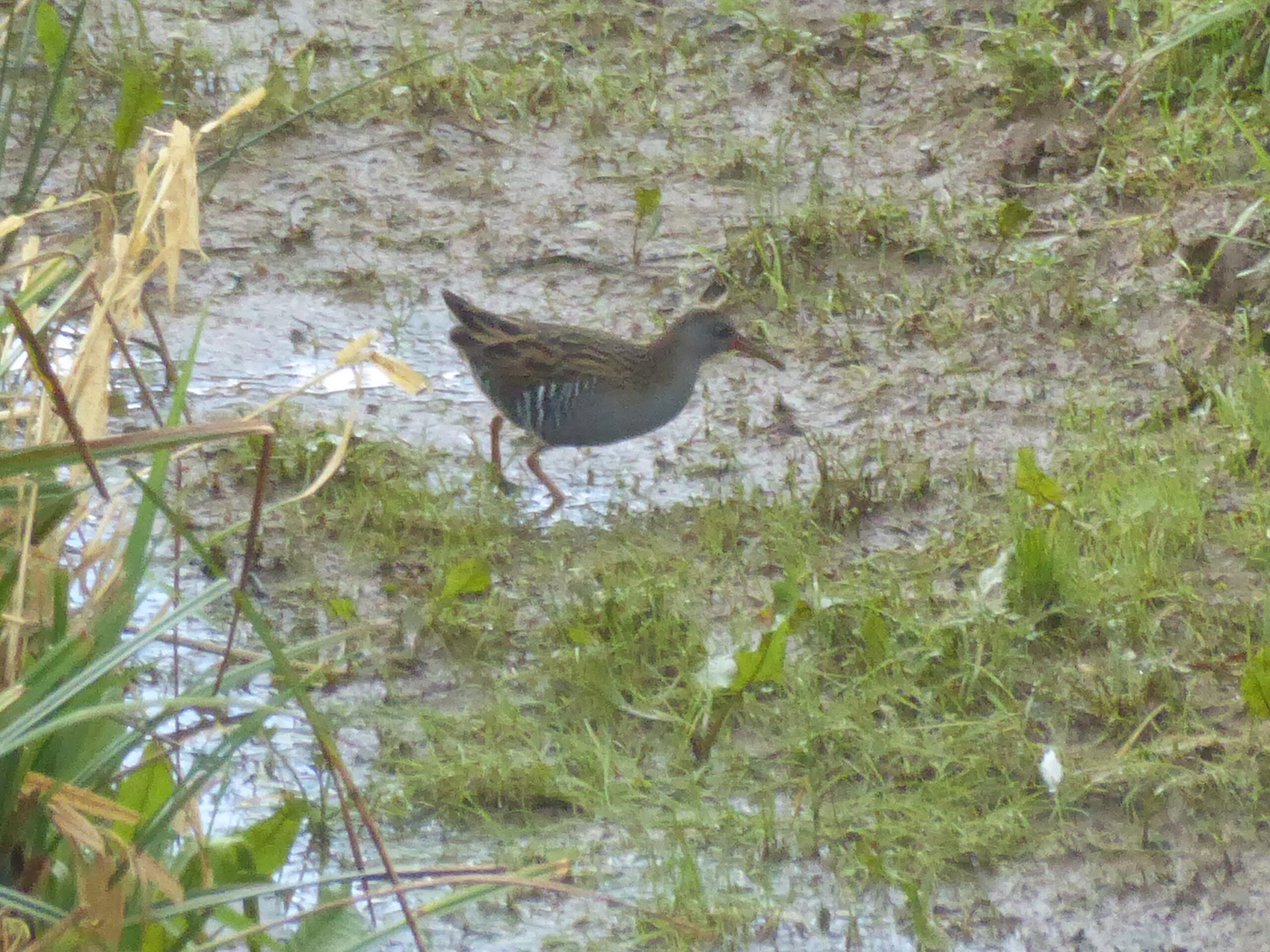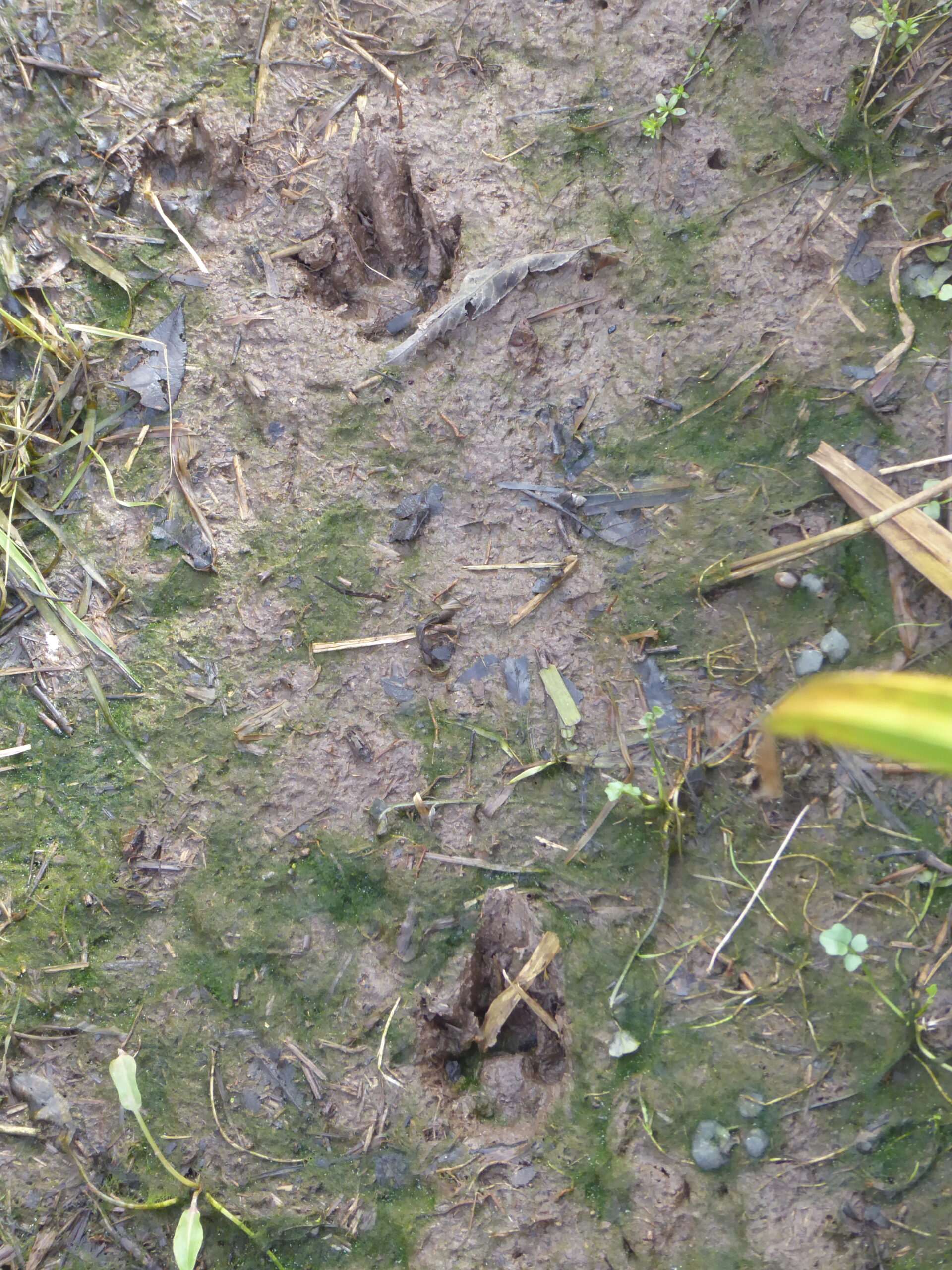Unmistakeably a weevil, with a head the same shape as an anteater’s. This Seed Weevil was bright red and caught my eye, as it scurried down a fat blade of grass and across the step. The only bits that weren’t red were its black eyes and claws. It was textured with tiny dimples and ridges. They are usually found on the leaves of large docks, on the underside of the leaves, but mainly from April till early June. They lay a single egg in a hole in the stem and seal the hole. The next generation adults emerge from June and then aestivate over the summer, re-emerging in the autumn to feed up before they overwinter on or under their host plant.
